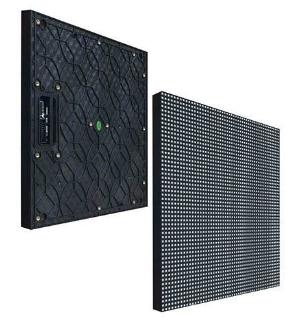source:other news release time:2023-10-07 Hits: Popular:led screen wholesaler

In the past two years, the most popular topic in the LED display industry has been the High Resolution/High Definition LED Display. With the decline in LED packaging prices, the price of small dot pitch LED displays is becoming more approachable. Compared to liquid crystal screens (LCDs) or back projection (DLP), small dot spacing LED displays have the following advantages, such as arbitrary size splicing without seams, and no need to dim ambient light sources. In addition to LEDs, LED driver chips are also one of the important components for small dot pitch LED displays. Although many suppliers claim that their LED driver chips are designed for small dot pitch LED displays, in fact, they still need some means to conceal some defects. The following will introduce the truth and methods of using inappropriate driver chips to conceal poor display performance in small dot pitch LED displays.
1. Uneven blocks and color deviation (slightly red)
In indoor applications, the brightness of LED displays often ranges from 300 to 1000 nits. This brightness is converted into LED forward current, which is approximately 1-5mA or even less than 1mA. Therefore, the concentration of small current in the driving chip has become very important. When the current accuracy of the driving chip is poor, LED display screens with small dot spacing are prone to uneven color blocks. However, to cover up the defect of color blocks, it is usually necessary to increase the LED current to increase the brightness of the display screen. But the downside is that when the audience looks at this LED display screen for a period of time, their eyes may feel uncomfortable. Figure 1 illustrates the actual differences in the reconstructed images of LED display screens with small dot spacing when using different quality LED driver chips.
In proportion, the forward current of green and blue LEDs is more affected by parasitic capacitance than that of red LEDs. Therefore, at low grayscale, LED displays with small dot spacing will appear red tinted, which is a commonly known color shift phenomenon, as shown in Figure 2. The correct solution is to use LED driver chips with color deviation compensation, rather than masking this drawback by increasing the forward current of the LED.
2. Image detail loss at low brightness
If the aforementioned shortcomings are not covered up by increasing the forward current of the LED, another method is to adjust the gamma curve of the LED display screen with small dot spacing. The grayscale brightness is crucial for correct image reproduction, as the brightness in the video source contains most of the image data. As shown in Figure 3, the gamma value of the image on the right is small, indicating that the brightness of the middle tone is too high. Therefore, the overall image is whitewashed and lacks depth, resulting in a significant loss of detail in the image,.
Read recommendations: